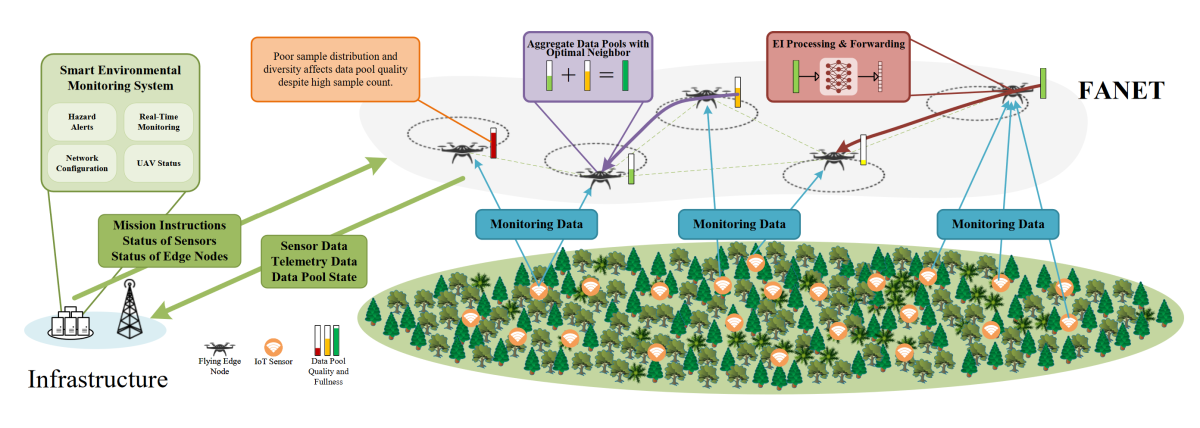
Förderjahr 2023 / Stipendien Call #18 / ProjektID: 6801 / Projekt: Communication and Energy Efficient Edge Artificial Intelligence Framework for Internet of Things
We proposed a system in which edge nodes (UAVs) collect data from sensors in order to extract environmental information and shrink the data size with EI processing.
Environmental monitoring is crucial for sustainable development and preserving our ecosystem and natural resources. Smart environmental monitoring (SEM) allows us to collect and analyze data on a range of environmental factors. SEM systems typically consist of multiple IoT devices (sensors) and a remote cloud server. For remote areas monitoring, IoT devices are connected to the gateways in order to allow the data transfer between sensors and the server. One of the core challenges of deploying SEM systems in rural areas is the logistic complexity of setting up and maintaining such systems. Furthermore, the size of these environments and their corresponding data size severely limits the bandwidth of wireless transmissions and the static deployment of gateways can have several disadvantages.
Instead, by installing these gateways on UAVs, it is possible to deploy monitoring systems quickly and more cost-effectively over large areas by creating Flying Ad-Hoc Networks (FANETs) without the need for extensive infrastructure or other resources. The customizability of UAVs allows us to configure them with different communication standards, onboard computing units, and multiple sensors to create Flying Edge Intelligence (FEI). The benefits of replacing static gateways with FEI-equipped UAVs include;
- we can easily adapt UAVs to different environments, decreasing the deployment and maintenance costs.
- the altitude of the UAVs and line-of-sight can be adjusted to ensure robust communication

The system presented in the figure above is composed of edge nodes (UAVs) that collect sensor data. The collected is processed to extract meaningful information and reduce data size. The processed information is then forwarded to the SEM server. To ensure optimal performance, it is important to optimize the data collection process at the edge nodes, so that the data pool is diverse and fresh at each iteration. To accomplish this a novel data aggregation method is proposed with the aim of both increasing data quality and decreasing Age Of Information (AoI).


